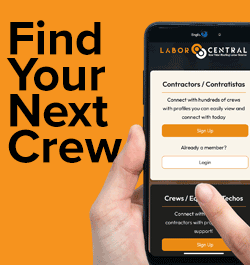Three Steps to Creating and Supporting a Diverse Workplace Environment

RCS Influencer Trent Cotney says that companies need to have a commitment to diversity, non-discrimination, and non-harassment in their workplace.
In light of the current labor shortage in the industry and the national conversation sparked by the #Metoo movement regarding sexual harassment in the workplace, never before has the importance of embracing and fostering diversity in the workplace been more salient than now. While there is no quick-fix, one-size-fits-all solution, below are some steps companies can take to help create a workplace that embraces diversity by cultivating a culture of inclusiveness and intolerance of harassment and discrimination of any kind.
Written Policies and Procedures
The first thing a company needs to do to embrace diversity is to make sure it has that commitment to diversity, non-discrimination, and non-harassment down in writing for all employees to see and understand. This includes having a written policy, at a minimum in the employee handbook, which expressly states that the company does not discriminate on the basis of any protected category and prohibits all employees from discriminating against or harassing any individuals on the basis of their membership in any protected class or otherwise.
The policy should also provide clear, robust reporting procedures for employees to know how and to whom they should report any claims of discrimination or any harassing behavior they might experience or witness. Importantly, reporting policies should not be limited to requiring employees to report claims only to their immediate supervisor, but should instead provide multiple avenues for reporting to upper management and/or HR in case the employee’s immediate supervisor is the accused harasser.
The company should also put a policy and procedure in place that all complaints of discrimination or harassment will be promptly and thoroughly investigated by a third-party member of management or HR and will be handled as confidentially as possible.
A company’s handbook should also contain a written policy expressly prohibiting retaliation against anyone who makes a discrimination/harassment claim or who provides verification and support for a claim made by someone else.
The policy should spell out the consequences for any discriminatory or harassing behavior, including the possibility of disciplinary action up to and including termination.
Finally, the company’s written policies on this subject should make clear that they apply to everyone in the company including all levels of management and that everyone is expected to comply with them and to uphold the values of the company by reporting any discriminatory or harassing behavior they experience or witness.
Education and Training
The next component is for the company to educate and provide thorough training – live, in-person training preferably – for all employees, but especially for all management-level employees, on the policies and procedures outlined above.
The company’s training should spell out what is and is not considered harassment and who can be a harasser (managers, co-workers, customers, vendors, individuals of the same sex as the victim, etc.)
Because actions taken (and not taken) by managers and supervisors are imparted to the company, all managers must be thoroughly trained and knowledgeable on the company’s reporting procedures, how to escalate complaints they receive up the chain to HR and/or upper management, how to recognize, stop, and address harassing conduct when they see it happening, and how to prevent further harassing behavior from occurring while an investigation is ongoing in a way that does not punish the complaining employee or prematurely punish the accused harasser.
Executive Leadership, Buy-in, and Accountability
Embracing diversity and building a workplace culture of inclusiveness requires buy-in and support from the top down so that managers feel empowered to enforce the company’s policies and employees trust that they can speak up without fear of retaliation.
Company leaders should vocally champion the company’s non-discrimination & harassment policies, openly and frequently expressing the company’s commitment to diversity and to providing a workplace free of discrimination, harassment, and retaliation.
Company leaders should also hold managers and employees accountable by regularly checking in to make sure the company’s policies are being enforced and complied with – i.e., ensuring all complaints are being reported up the chain, investigations are being promptly, fairly, and confidentially conducted, and appropriate discipline that actually ends the harassing behavior is being imposed for any established violations of the company’s policies.
Company leaders should also avoid downplaying or ignoring any bad behavior that may occur or that has occurred in the company’s past and should assure employees that the company takes these issues seriously, does not tolerate discrimination or harassment of any kind, and has mechanisms in place to correct any such behaviors that don’t reflect the company’s values.
Although a company that implements the steps above may not see immediate changes in the diversity of its workforce or applicant pool, these steps will go a long way towards building a reputation within the company as well as in the community and the roofing industry that the company fully embraces and promotes diversity, which reputation should eventually lead to a more diverse and productive workplace environment for the company down the road.
Trent Cotney is the founder of Cotney Construction Law, specializing in construction law. See Trent’s full bio here.
Author’s note: The information contained in this article is for general educational information only. This information does not constitute legal advice, is not intended to constitute legal advice, nor should it be relied upon as legal advice for your specific factual pattern or situation. Regulations and laws may vary depending on your location. Consult with a licensed attorney in your area if you wish to obtain legal advice and/or counsel for a particular legal issue.





















Comments
Leave a Reply
Have an account? Login to leave a comment!
Sign In